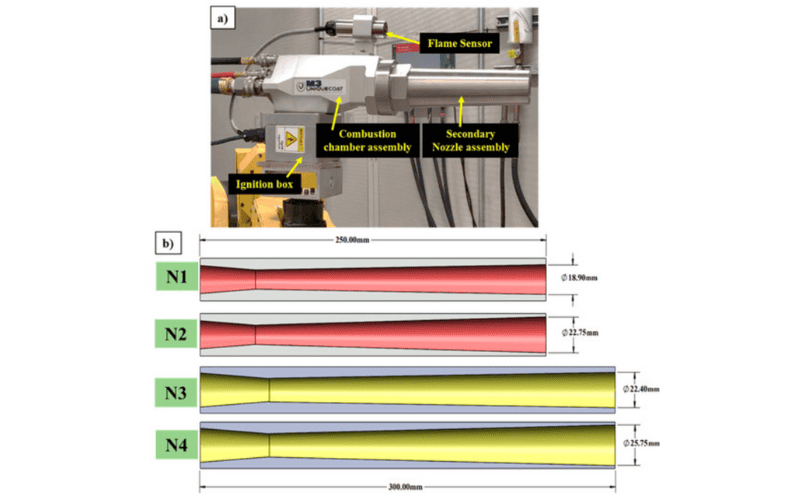April 1, 2025
The Role of HVAF Nozzle Design and Process Parameters on In-Flight Particle Oxidation and Microstructure of NiCoCrAlY Coatings
Increasing demand to deposit dense and oxidation-resistant bond coats requires reliable and efficient deposition techniques. High-Velocity Air-Fuel (HVAF), among other thermal spray processes, is showcasing consistent potential to optimize spraying techniques and deposition strategies for depositing NiCoCrAlY coatings. NiCoCrAlY coatings are sensitive to high-temperature oxidation, and preserving the aluminum reservoir in the bond coats is of the highest priority to potentially resist oxidation during thermal cycling. Contrary to the existing literature on comparing carbide-based HVAF deposition with other processes, this work investigates the specific role of nozzle configurations. It primarily focuses on in-flight particle characteristics using diagnostic tools and the corresponding inflight particle oxidation of NiCoCrAlY feedstock. This work details individual splat and coating characteristics, revealing the significant influence of nozzle configurations. A comprehensive understanding of process–material–microstructure correlations was established using a commercially available NiCoCrAlY coating system. Comprehensive discussions on nozzle configurations over various feedstock powder characteristics were carried out in this work. Advanced characterization techniques were employed to assess the in-flight particle oxidation and coating microstructure using focused ion beam (FIB), scanning electron microscopy (SEM), and energy dispersive spectroscopy (EDS).
Key words: HVAF, high-velocity air-fuel, NiCoCrAlY; aluminum, oxidation, bond coat
Originally published at Coatings 2025, 15(3), 355
By Aravind Kumar Thoutam, Murilo Sergio Lamana, Bruno C. N. M. de Castilho, Fadhel Ben Ettouil, Ritvij Chandrakar, Stephanie Bessette, Nicolas Brodusch, Raynald Gauvin, Ali Dolatabadi and Christian Moreau
